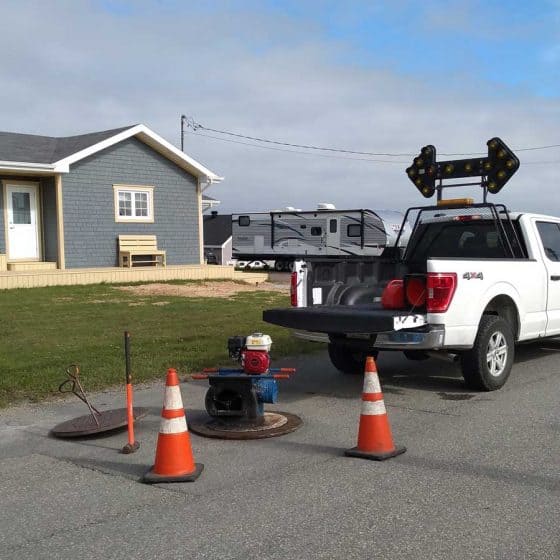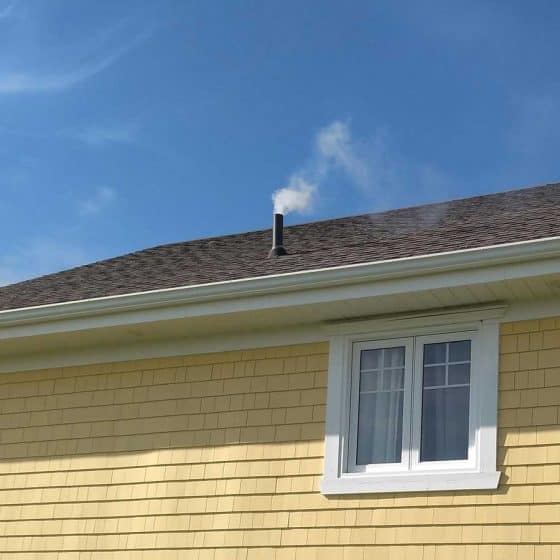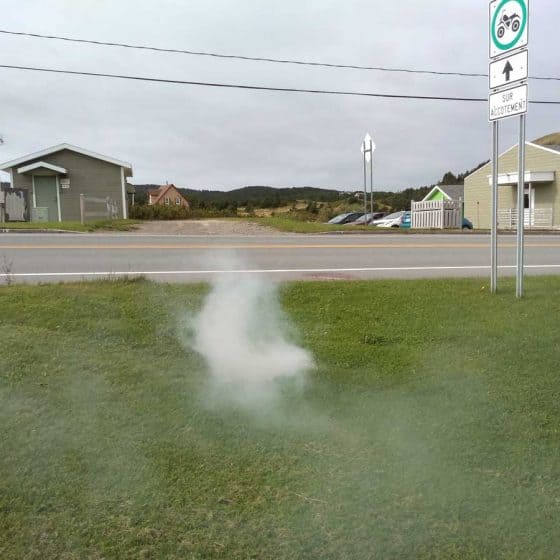A cross connection is a connection or defect that directs domestic or industrial wastewater into a storm sewer or other outlets that discharge untreated water into natural receiving environments.
Infiltration water, on the other hand, refers to rainwater entering a sanitary sewer system, either through infiltration or an illegal connection. These cross connections interfere with compliance with the Québec Water Strategy of the Ministry of the Environment, Climate Change, Wildlife, and Parks (MELCCFP).
Can-Explore provides cross connection detection services using advanced tools and proven methods, such as camera inspections, smoke testing, dye tests, and manhole inspections and sampling. Our interventions effectively identify anomalies, ensure network compliance, and contribute to the protection of natural environments.
Finding the Source of the Problem
Most cross connections result from a service connection to the storm water system instead of the sanitary sewer system. There are also other sources of cross connections, such as those caused by a plumbing error inside a building, or those caused by leaks or spills from a residential sewer system, which end up in the storm water system or a natural receiving environment.
Our Work
Our team at Can-Explore’s investigates as follows to correct a cross connection problem.
- Inspection and sampling of outlets in dry weather;
- Inspection and sampling of manholes upstream of contaminated outlets in dry weather;
- Dye testing: Performance of dye tests in residences suspected of being improperly connected;
- Location of cross connections using a CCTV camera;
- Correction of cross connections.
To confirm there is a cross connection, the faulty building must be connected by or sanitary sewer system or a combined sewer. Some exceptions apply in the case of overflow structures described in the Guide de méthodologique pour la recherche et l’élimination des raccordements inversés dans les réseaux de collecte des eaux usées municipales (guide to find and eliminate cross connections in municipal wastewater collection systems).
Understanding the issues related to improper connections to the sanitary network
Cross-Connections
Most reversed connections come from a service connection linked to the storm sewer system instead of the sanitary sewer system. There are other sources of reversed connections, such as those caused by plumbing errors inside buildings, as well as leaks or discharges from the domestic sewer system to the storm sewer system or to a natural receiving environment.
Stormwater
Stormwater in a sewer system is actually rainwater that ends up in the sewer network. This water can come from an illicit connection of a drainage element to the sanitary sewer system. It can also infiltrate the sanitary system through structural defects in the pipes (misaligned joints, cracks, fractures, etc.) when the external water pressure is sufficient for water to seep in.
During a rainfall event, the additional water that enters the sanitary sewer system can cause overflow at the overflow structures in the network or at the wastewater treatment plant. The system or plant then discharges untreated water directly into the receiving environment, as their treatment capacity is exceeded. During periods of heavy flooding, this problem can lead to significant backflow in homes connected to the system and overflows at wastewater treatment plants.
Why search for reverse connections or stormwater infiltration?
- Protect the environment: By improving water management and preventing the mixing of sanitary wastewater with stormwater, which can be directly discharged into the receiving environment during heavy floods when wastewater treatment plants overflow.
- Reduce the risk of backups and overflows caused by stormwater infiltration.
- Minimize bad odors in the city: Reverse connections can contribute to these unpleasant smells.
- Allow network expansion (real estate development): When there are already overflows at treatment plants during floods, this type of operation must be completed before connecting new homes to the network. The government requires that overflow issues be resolved before adding new homes to the network.
How it’s done
The Can-Explore team follows these steps to correct issues related to cross-connections or extraneous water.
In 2024, our teams carried out more than 20 major projects:
- Over 1,650 manholes inspected
- 930 samples analyzed in the laboratory
- 265 km of smoke testing conducted
- Over 1,100 dye tests performed
Request a quote: Detection of Cross-Connections
Any questions? A specific project in mind?
Don’t hesitate to contact us. Our solutions are tailored to your needs.




